Abstract
Nutraceuticals are nutritional medicines which are present in edible food items. Most of them are antioxidants with various other biological properties viz, anti inflammatory, anti atherogenic, anticancer, anti viral, anti aging properties etc. They are as simple as minerals like Se2+ to complex organic molecules such as glycyrrhizin (Ca2+, K+ salts of glycyrrhizic acid). They can prevent as well as cure various diseases. Most of the medical people are not aware of the importance of the nutraceuticals as such matters are not part of their text books. Many still think that vitamins are the major nutritional medicines. Actually other dietary principles like terpenes, carotenes, phytosterols, polyphenols, flavanoids, di and poly sulphides, their sulfoxides and their precursor amino acids are necessary to scavenge free radicals in the body which are reactive oxygen species to protect and maintain the vitamin levels in the body. They down regulate the activities of those enzymes which are increased in diseases and they increase those that remove oxidants and detoxify carcinogens. They are immune boosters too. Recently glucosinolates, non toxic alkaloids, certain proteins and even fiber are included in the list of nutraceuticals.
Keywords: Nutraceuticals, Anti oxidant, Immune boosters, Anti thrombogenic, Anti microbial, Anti cancer
Introduction
Dr. Stephen De Felice first coined the term nutraceutical in 1989 while he was presenting a paper in a conference, and he defined the nutraceuticals as “food or parts of food that provide medical or health benefit including the prevention and treatment of diseases” [1]. The term functional food is also used to refer nutraceuticals/nutritional medicines. In the states of Canada and Great Britain, a functional food, but a nutraceutical is in an isolated form or concentrated form. The part of the word “ceutical” is used because they are medicines as well as nutritional factors [2]. In our opinion the term nutraceutical should be essentially used to represent chemically identified compound with medicinal effects and also naturally present in our diet that could be isolated anytime. When one or more nutraceuticals are present in a diet or items such as edible fiber (e.g., rice bran) is present in the same or it can be added to it that can be simply termed as a functional food. The true nutraceuticals are mentioned in Table 1 along with newly added items such as vitamins, minerals and fibre. One can agree to the inclusion of items such as vitamins in the class of nutraceuticals even though they have properties far above and different from true nutraceuticals, e.g., vitamin A becomes the part of rhodopsin in retina, other fat soluble vitamins D, E and K have different roles from nutraceuticals but all of them prevent or cure diseases. Thiamine becomes the part of thiamine pyrophosphate (TPP) that is the coenzyme for pyruvate decarboxylase. Likewise all B vitamins function as parts of different co-enzymes. However all of them prevent or cure diseases. Traditionally each vitamin has got its own identity, status and nutritional importance along with carbohydrates, proteins and minerals. If the vitamins are strictly included in the class of nutraceuticals many doctors shall continue to speak and write on vitamins as the major members of the nutraceuticals as at present what they are doing. This will enable them to ignore a dozen of other nutritional medicines which are true nutraceuticals as given in Table 1. The senior author came across many articles written by doctors who think vitamins are the major nutraceuticals and one need not worry about a group of nutritional medicines present in various food items along with vitamins. But this will sideline the role of true nutraceuticals about which the biochemists aim to advocate and propagate in future for the health and welfare of humans along with all other five nutritional items mentioned above. Actually the true nutraceuticals are as essential as the vitamins to prevent or cure many diseases e.g., cancer of all types, cardiovascular diseases, hepato toxicity, arthritis, radiation damages, hyper cholesterolemia, oxidative damages to various tissues, cataract, allergies, inflammation, hypertension, oestrogen over production, platelet aggregation, bacterial and viral related infections, vitamin A and E destruction in blood, destruction of antioxidant enzymes such as catalase, SOD, glutathione peroxidase, glutathione reductase etc. and for detoxification of heavy metals. One can see the differences in the roles of vitamins and true nutraceuticals which were highlighted by Marcia Zimmerman in her paper [3]. Therefore the readers may not ignore the use of food items containing true nutraceuticals with or without vitamins.
Table 1.
Classification of nutraceuticals, sources and potential benefits
| Class | Source | Potential benefits |
|---|---|---|
| 1. Carotenoids | ||
| Beta-carotene | Carrots, various fruits | Neutralizes free radicals, which may damage cells; bolsters cellular antioxidant defenses |
| Lycopene | Tomatoes and processed tomato products | May contribute to maintenance of prostate health |
| 2. Dietary fiber | ||
| Insoluble fiber | Wheat bran | May contribute to maintenance of a healthy digestive tract, hypocholesterolemic |
| Soluble fiber | Pectins of fruits e.g. apple | May contribute to maintenance of a healthy digestive tract, hypocholesterolemic |
| 3. Fatty acids | ||
| Monosaturated fatty acids | Tree nuts | May reduce risk of coronary heart disease |
| 4. Flavonoids | ||
| Flavonols | Onions, apples, tea, broccoli | Neutralize free radicals, which may damage cells; bolster cellular antioxidant defenses |
| 5. Isothiocyanates | ||
| Sulforaphane | Cauliflower, broccoli, cabbage, kale, horseradish | May enhance detoxification of undesirable compounds and bolster cellular antioxidant defenses |
| 6. Phenols | ||
| Caffeic acid, ferulic acid their derivatives and related compounds | Apples, pears, citrus fruits, some vegetables, turmeric, Grapes, tea, gooseberries | May booster cellular antioxidant defenses; may contribute to maintenance of vision and heart health |
| 7. Plant stanols/sterols | ||
| Stanol/sterol esters | Fortified table spreads, stanol ester dietary supplements | May reduce risk of coronary heart disease |
| 8. Polyols | ||
| Sugar alcohols (xylitol, sorbitol, mannitol, lactitol) | Some chewing gums and other food applications | May reduce risk of dental caries (cavities) |
| 9. Prebiotics/probiotics | ||
| Lactobacilli, bifidobacteria | Yogurt, other dairy and nondairy applications | May improve gastrointestinal health and systematic immunity |
| 10. Phytoestrogens | ||
| Isoflavones (daidzein, genistein) | Soybeans and soy-based foods | May contribute to maintenance of bone health, healthy brain and immune functions; for women, maintenance of menopausal health |
| 11. Soy protein | ||
| Soy protein | Soybeans and soy-based foods | May reduce risk of coronary heart disease |
| 12. Sulfides/thiols | ||
| a. Dithiolthiones | ||
| b. Allyl sulphoxy aminoacids | Cruciferous vegetables Allium vegetables |
May contribute to maintenance of healthy immune function |
| c. Allicin, Ajoen | Do (crushed forms) | Do |
| 13. Tocotrienol (isoprenoids) | Grains, palm oil | Anticancer (breast cancer), promotes cardiovascular health |
| 14. Saponins | Soyabeans | Lowers cholesterol level, anticancer activity (colon) |
| 15. Glucosinolates | Cruciferous vegetables | Anticancer (bladder cancer) |
| 16. Alkaloids | ||
| Quinine | Cinchona | Antimalarial |
| Tropane alkaloids | Solanaceous members: deadly night shade datura | In treatment of heart ailments |
| Morphine | Opium poppy | Anti depressent, pain killer |
| Ergot alkaloids | Fungus: Claviceps purpurea | Abortifacient |
| Vincristine | periwinkle | Antineoplastic |
| Vinblastine | Periwinkle | Antineoplastic |
| Coumarin | Fenugreek | Hypoglycemic |
| Scopoletin | Fenugreek | Hypoglycemic |
| Fenugreekine | Fenugreek | Hypoglycemic |
| Trigonelliine | Fenugreek | Hypoglycemic |
| 17. Non carotenoid terpenoids | ||
| Perillyl alcohol | Cherries and mints | Anticancer |
| Saponins | Legumes (chicks, peas, fenugreek) | Reduces cholesterol levels |
| Terpenol | Carrots | Anticancer |
| Terpene limonoids | Peels and membrane of citrus fruit | Anticarcinogenic |
| 18. Anthraquinones | ||
| Senna | Legumes and pulses | Purgative |
| Barbaloin | Aloe | Laxative, helmintic |
| 19. Terpenes | ||
| Menthol | Plants of mint family | Topical pain reliever and antipyretic |
| Borneol | Pine oil | Disinfectant |
| Santonin | Worm wood | Photosensitizer |
| Gossypol | Cotton | Contraceptive |
In the new table minerals are also included in the list of nutraceuticals. They function as co-factors for various enzyme actions, e.g., salivary amylase requires chloride ions, glutathione peroxidase requires Se2+, catalase requires iron and arginase requires manganese. More over iron deficiency leads to anemia, copper deficiency leads to Wilson’s disease and iodine deficiency leads to goiter. Thus they also prevent or cure many diseases. Therefore in the larger sense fiber and minerals are justifiably included in the Table 1, but if we want to include vitamins in the same table a foot note should be added that they alone will not carry out all the functions attributed to nutraceuticals on the contrary vitamins may be destroyed in the body by oxidants in the absence of antioxidant nutraceuticals. We have to keep in our mind that nutraceuticals are those nutritional medicines not ever thought of by the doctors or biochemists in the teaching field for a long time because so far no mention is made about them in their text books and each one preaches and writes in his/her own way. Therefore we have to reckon with the importance of this article. Only a few research workers do investigation on them and propagate their use. Therefore we are writing a review mainly on this part of research on the role of chemically identified nutraceuticals apart from all other functional foods.
Many of these new products which find their origin in plant kingdom are being promoted to treat various disease states. This is an obvious choice, as many plants produce secondary metabolites such as alkaloids, tannins (condensed polyphenols) etc. to protect themselves from oxidants and bacterial/viral infections. These constituents may be useful in the treatment of human infections that lead to body ailments affecting heart, lungs, liver, alimentary tracts, eyes and bones. Besides the above action, nutraceuticals act as agents with various properties as mentioned below.
Antioxidant Activity
Nutraceuticals have been reported to possess potent anti oxidant activity. The chemo protective action of epigallocatechin, epigallocatechin gallate (EGCG), epicatechin gallate (ECG) etc. (see Table 2) are due to their inhibiting action on enzymes such as lipoxygenase and cyclooxygenase [4]. EGCG, ECG inducing ARE-mediated gene expression through the activation of MAPK proteins [5], (ERK, JNK and p38). Another polyphenol Curcumin of turmeric inhibits mitochondrial proton F0F1-ATPase/ATP synthase [6], increasing the expression of GSTP1 by activating ARE and Nrf2, increasing CAT, SOD activity and heat shock proteins 70 expression, decreasing the activity of iNOS, decreasing malondialdehyde (MDA), NO(2)(−) + NO(3)(−) and myeloperoxidase (MPO) level and serum transaminase concentration explain the mode of action of polyphenols [7].
Table 2.
Structure, action and sources of nutraceuticals
| Name and structure | Neutraceutical action | Sources | References |
|---|---|---|---|
1. Zingiberene 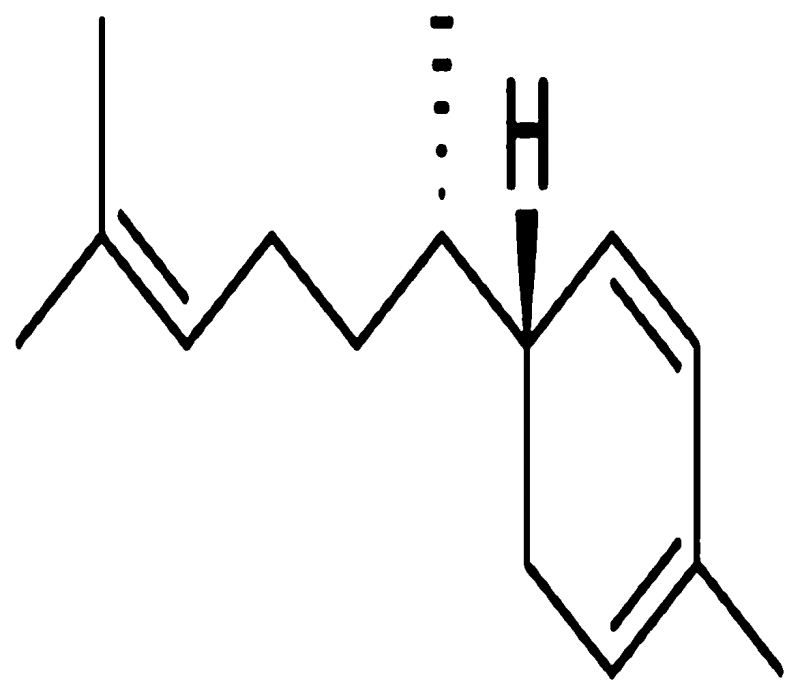
|
Heart diseases, clotting defects, anti platelet aggregation | Ginger | [64] |
2. Citral 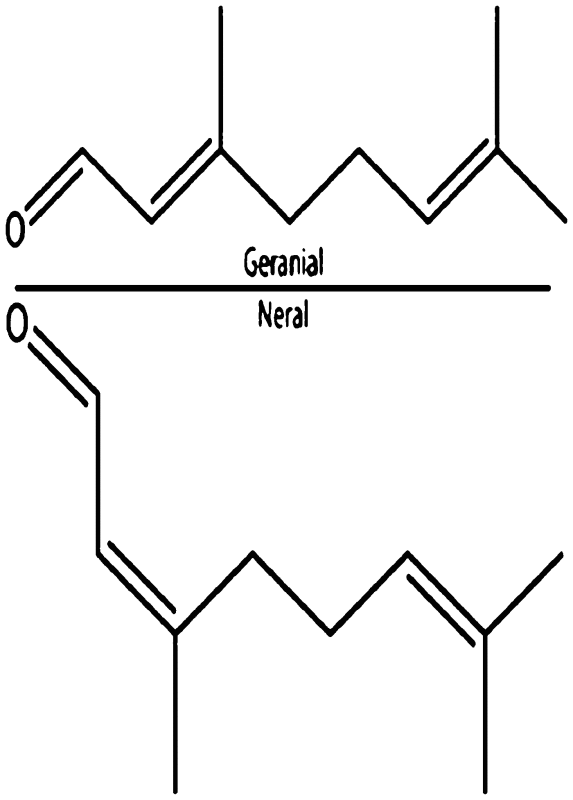
|
Cancers, induction of apoptosis | Lemon grass | [65] |
3. 6-Shogaol 
|
CHD, cancers, anti platelet aggregations and apoptosis | Ginger | [66] |
4. Ellagic acid 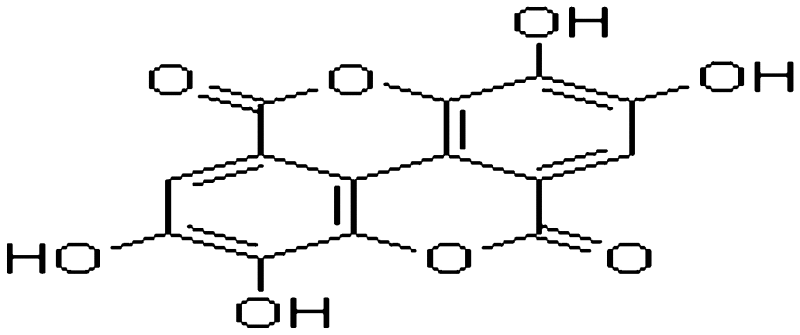
|
Block pro carcinogens, reduce esophageal, and colon cancers and induction of apoptosis | Strawberries, raspberries, pomegranate | [67] |
| 5. Ellagi tannins condensed polyphenols | Anti carcinogenic, induction of apoptosis | Strawberries, raspberries, pomegranate | [67] |
6. Catechin, gallocatechin Caffeic acid, anthocyanins Gallocatechin gallate 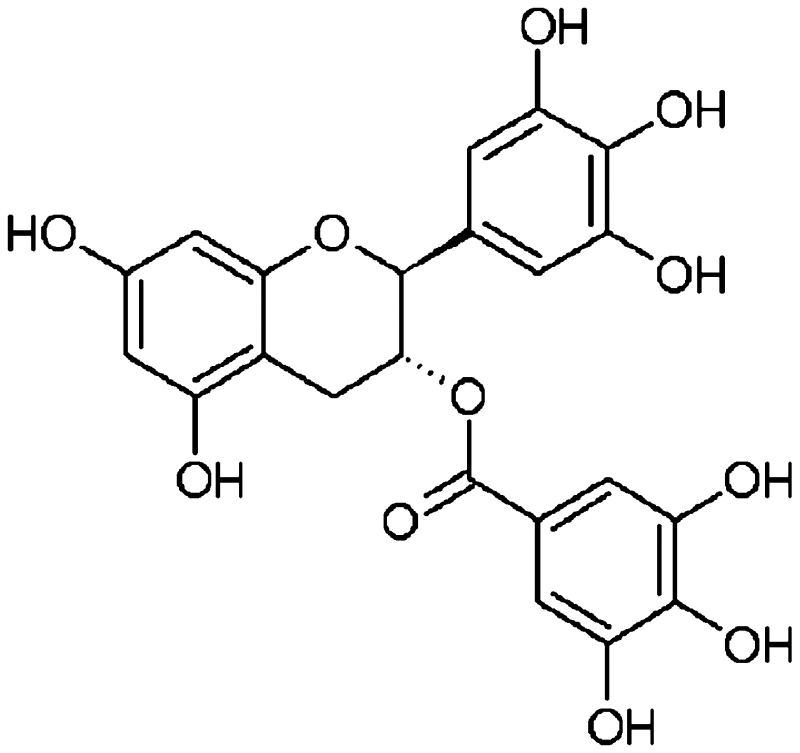
|
CHD and cancer induction of apoptosis | Strawberries, raspberries, pomegranate | [18] |
7. Chlorogenic acid 
|
Anticarcinogenic induction of apoptosis | Blueberries, tomatoes, coffee, tender garlic leaves | [68] |
8. Genistein 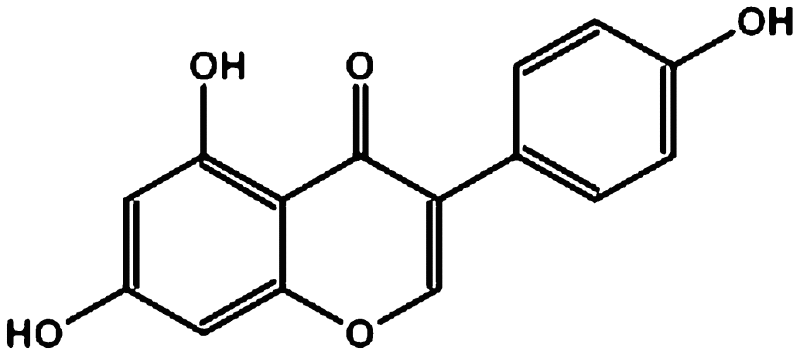
|
Prevent breast and prostate cancer induction of apoptosis | Soyabean | [69] |
9. Vitamin E 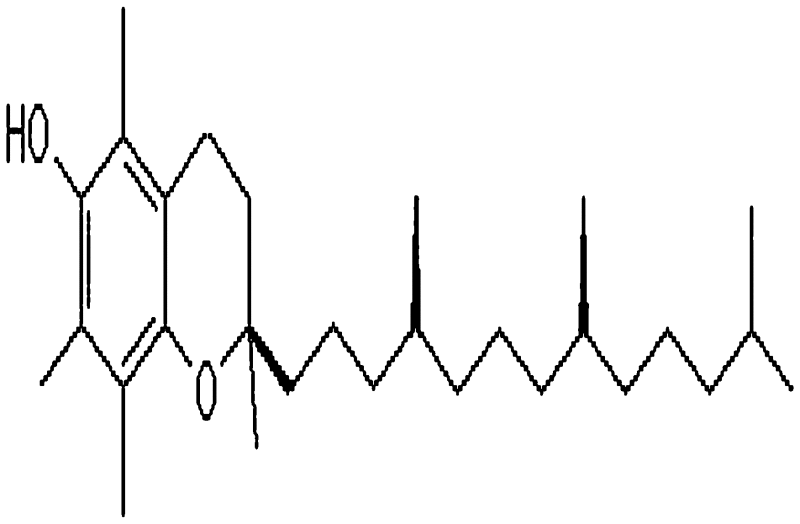
|
Prevent conversion of nitrates and nitrites to nitrosamines (carcinogens) | Germinated seeds, fish oils | [70] |
10. Limonene 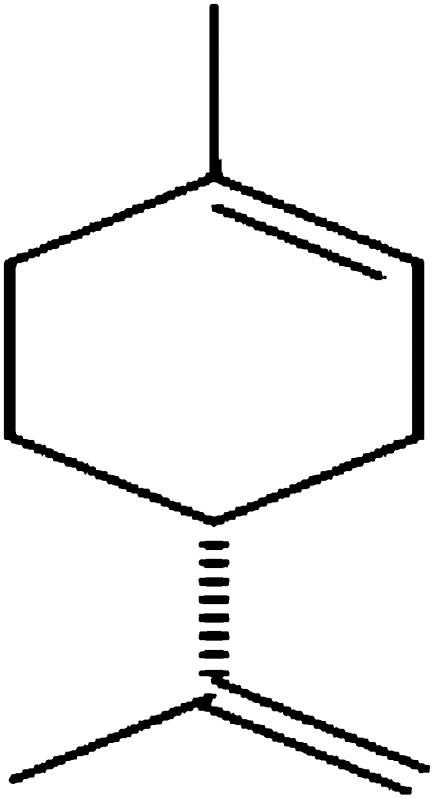
|
CHD, cancer induction of apoptosis | Black pepper, carda | [71] |
11. Eugenol 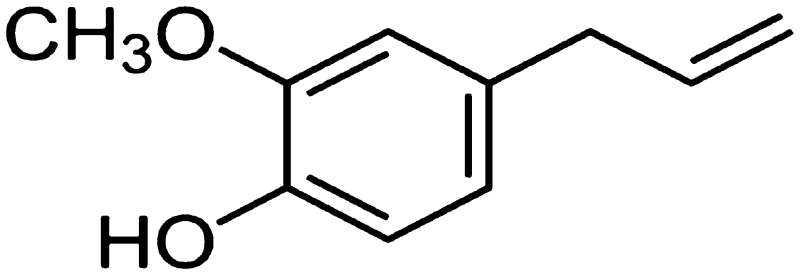
|
CHD, cancer induction of apoptosis, anti microbial | Clove, all spice, ginger | [72] |
12. β-Carotens 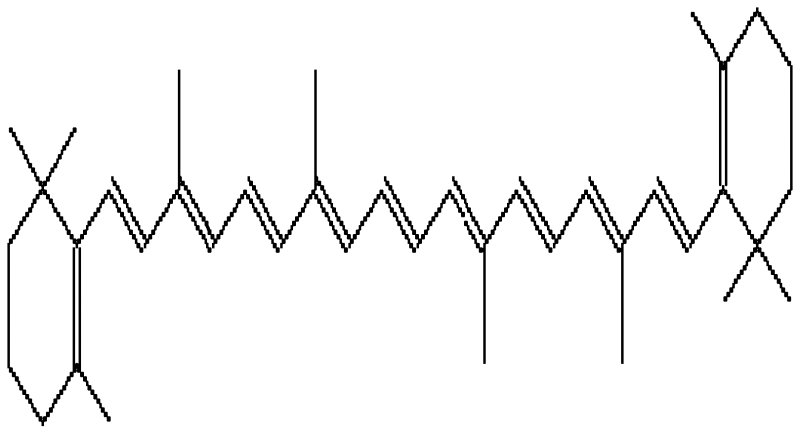
|
CHD, cancer, induction of apoptosis | Carrots, tomatoes, apricot, sweet potatoes, yellow fruit, pumpkins | [73] |
13. Myricetin 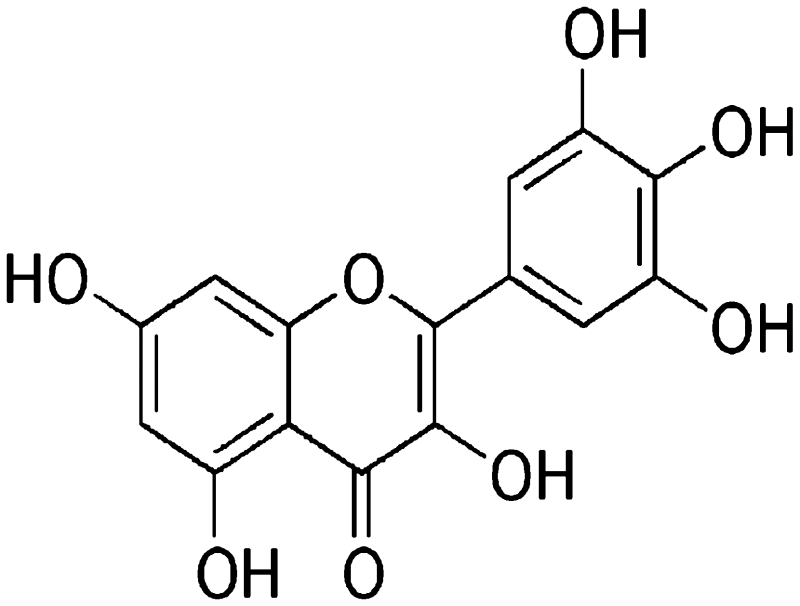
|
Hepato protective, anti viral | Nutmeg, black pepper, carrots, parsley | [74] |
14. Epi catechin 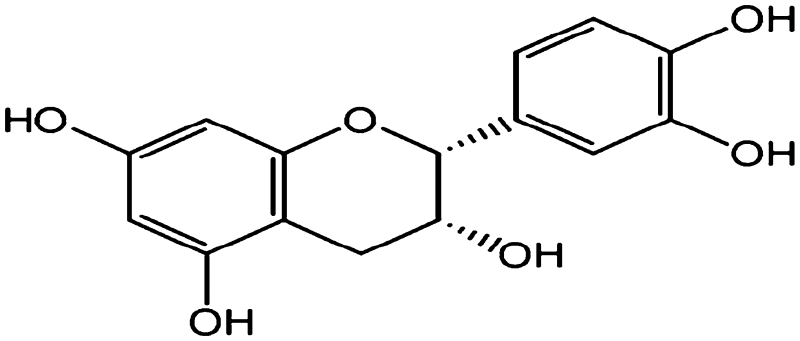
|
CHD, cancer, induction of apoptosis | Tea, beans | [48] |
| 15. Epigallocatechin (a tannin polyphenol with 5 hydroxyl group) | Cancer and CHD, induction of apoptosis | Red wine, apple, cherry | [75] |
16. Vanillin 
|
Induction of apoptosis | Vanilla | [76] |
17. Resveratrol 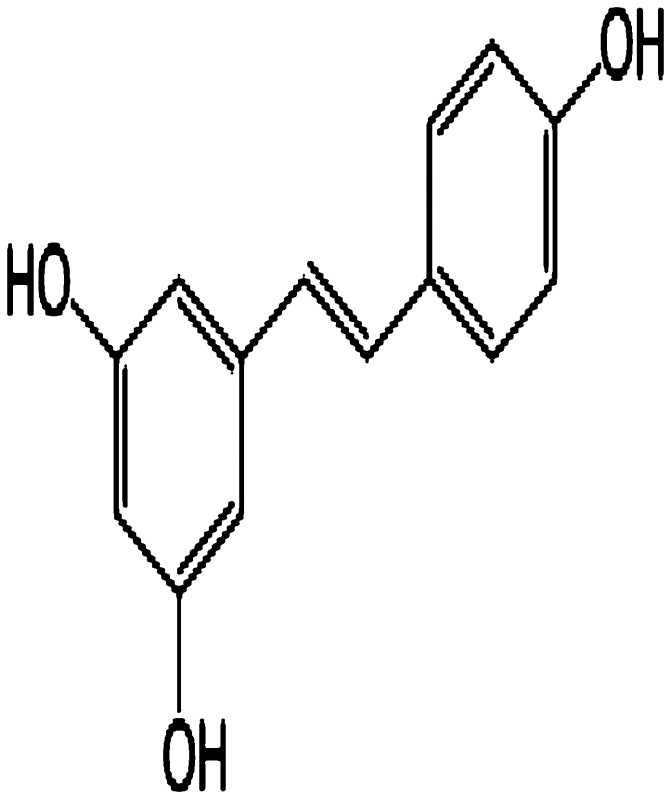
|
CHD | Red wine | [77] |
18. WithaperuvinE 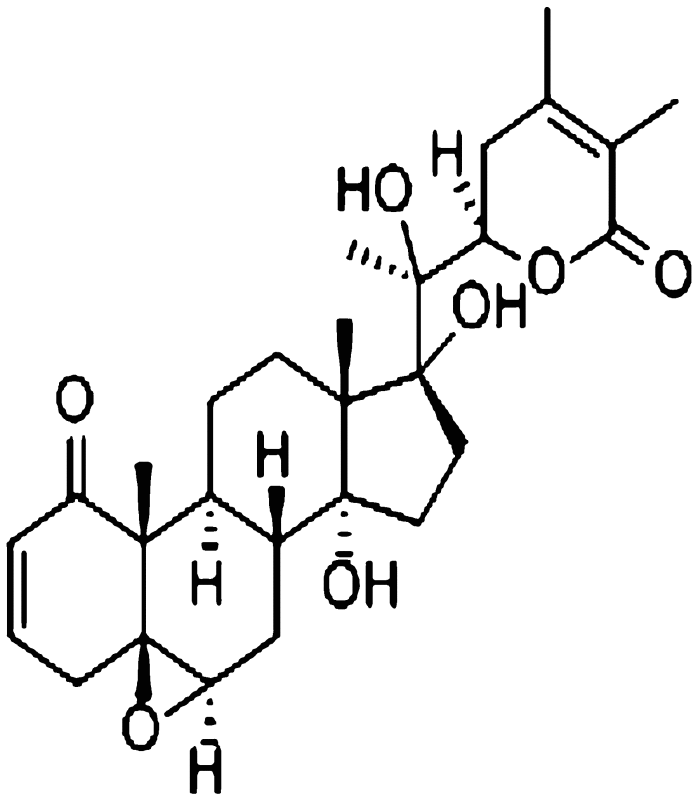
|
Anti lipid peroxidation activity | Roots of physalis peruvianna L. | [78] |
19. Coumestrol 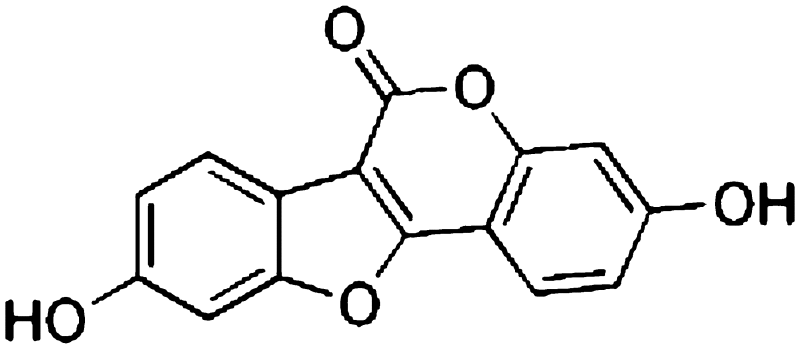
|
Prevents breast and prostate cancer by preventing estradiol to its receptors | Legumes, soya beans, spinach | [79] |
20. Beta-sistosterol 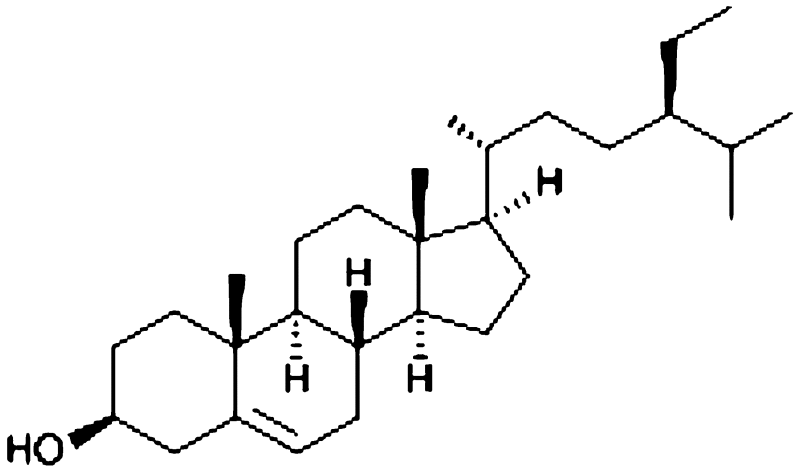
|
Reduces blood cholesterol level, plays some role in the possible effect of herbal therapy in benign prostatic hypertrophy | Rice bran, wheat germ, corn oil, pumpkins and soyabean | [80] |
21. Brassicasterol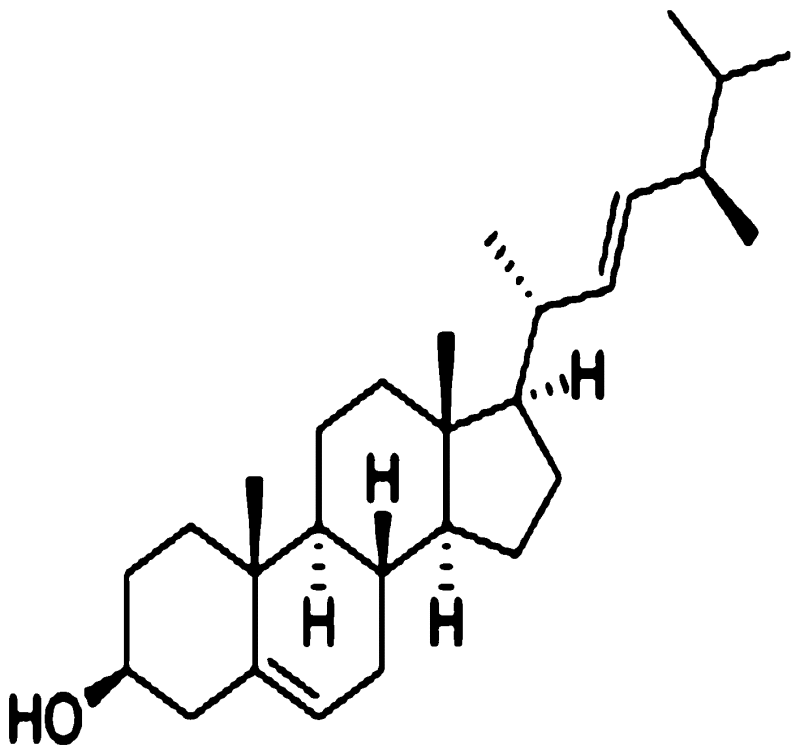
|
Hypocholesterolemic | Algae, oil seed rape | [81] |
22. Silymarin 
|
Protective against skin cancer | Artichokes and milk thistle | [82] |
23. Mangiferin 
|
Protects DNA from radiation | Mango | [31] |
| 24. Glycyrrhizic acid | Protects DNA from radiation | Glycyrrhiza glabra | [83] |
25. Punicalogin 
|
Protects DNA from radiation | Pomegranate | [84] |
26. Caffeicacid, anthocyanins 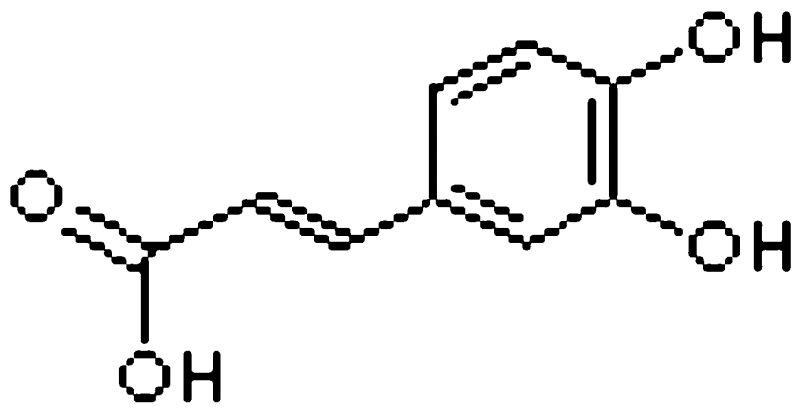
|
CHD | Coffee seeds | [85] |
| 27. Ellagic acid and Phyllemblic acid (polyphenols) | B(ap)induced cancers, lung and stomach cancer | Amla (gooseberry) | [37] |
28. Vitamin C 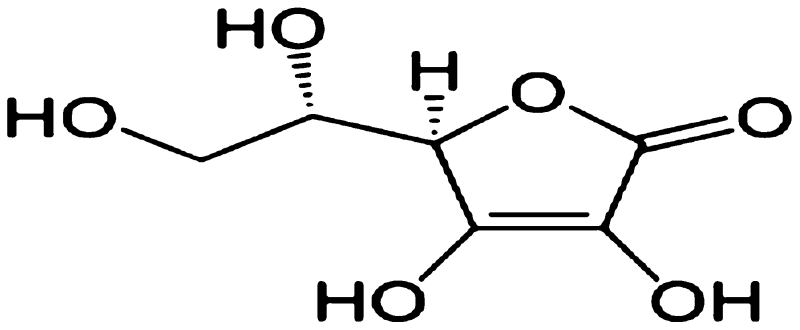
|
CHD, cataract, cold cit | Amla, cabbage, cauliflower, broccoli, potatoes, black, pepper, tomatoes | [86] |
| 29. Vitamin E | CHD, prostate cancer, Alzheimer’s disease | Eggs, vegetable oils, ground nuts, oats | |
30. β Carotene 
|
CHD, lung cancer | Carrot, tomatoes, sweet potatoes, apricot, papaya | [87] |
31. Lutein 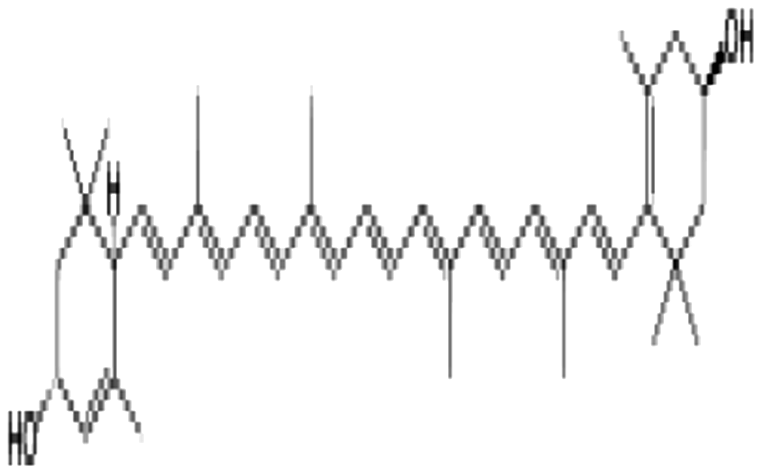
|
Eye diseases | Dark coloured vegetables, leaves, orange, spinach | [88] |
32. Lycopene 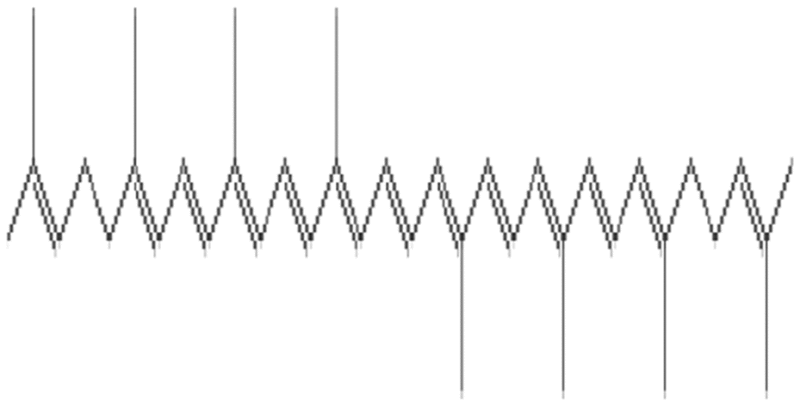
|
Anti tumor, induced apoptosis | Tomatoes | [89] |
33. Curcumin 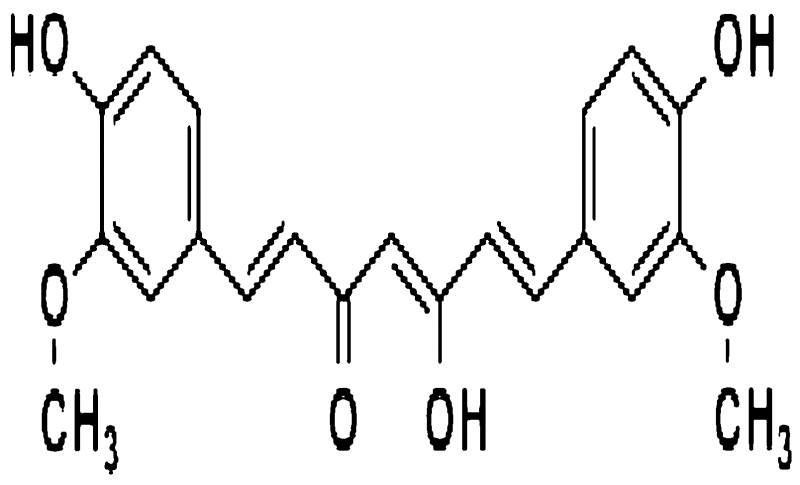
|
Antitumor, immuno stimulant, induction of apoptosis | Turmeric | [90] |
34. Ajoene 
|
Antitumor, immuno stimulant, induction of apoptosis, antiplatelet aggregation | Garlic and its oils | [91] |
| 35. Allicin type compounds | Antitumor, Immuno stimulant, Induction of apoptosis, detoxification of heavy metal poisoning e.g., lead, cadmium, arsenic, anti viral action e.g., chikungunya, anti bacterial action e.g., jaundice | Garlic, onion and their oils | [35, 38, 40, 41, 91, 92] |
The following findings also explains the mode of action of various polyphenols. Ellagic acid, Gallic acid and Corilagin inhibits tyrosinase, xanthine oxidase and the formation of superoxide radical [8]. Caffeic acid (+)-catechin inhibits peroxynitrite-mediated oxidation of dopamine [9]. Quercetin prevents lactate dehydrogenase (LDH) leakage and increase the antioxidant enzymes such as SOD, CAT, GPx, and GR activity along with GSH content in tissues [10]. Quercetin also decrease MDA and lipoperoxidation, increasing Cu/Zn SOD and GPx mRNA [11]. Further it also increase the expression and activity of NADPH: quinone oxidoreductase-1 (NQO1) [12] and enhance γ-glutamylcysteine synthetase (γ-GCS) [13]. Resveratrol inhibits O-acetyltransferase and sulfotransferase activities preventing the oxidative DNA damage [14]. Such action of resveratrol inhibit the production of H2O2 and MPO activity, increase GSH levels and SOD activities as well as decreasing the levels of MPO and oxidized GR [15]. (−)-Epicatechin procyanidin EGCG, ECG etc. inhibit recombinant human platelet 12-lipoxygenase and 15-lipoxygenase [16].
Anti Inflammatory Effects
Inflammation is the response of body tissues to injury or irritation, characterized by pain and swelling and redness and heat. Oxidative stress induced inflammation is mediated by the activation of NF-κB and AP-1. It affects a wide variety of cellular signaling processes leading to generation of inflammatory mediators and chromatin remodeling [17]. The latter allows expression of pro-inflammatory genes such as interleukin-1beta (IL-1β), IL-8, tumor necrotic factor alpha (TNF-a), and inducible nitric oxide synthase (iNOS) [18]. The undesired effects of oxidative stress have been found to be controlled by the antioxidant and/or anti-inflammatory effects of nutraceuticals. Catechins can inhibit the release of some allergic reactions factors such as leucotrienes/prostaglandins by modifying activities of multiple enzymes taking part in inflammatory states of the human body [19]. Procyanidins inhibit transcription and secretion of IL-1β in peripheral blood mononuclear cells [20]. EGCG, ECG downregulate CD11b expression, attenuating adhesion and migration of peripheral blood CD8+ T cells in peripheral blood CD8+ T cells [21]. Resveratrol inhibits stimulation of caspase-3 and cleavage of PARP induced by IL-1β in human articular chondrocytes and suppressess the expression of iNOS mRNA and protein by inhibiting the activation of NF-κB and inhibits NO generation [22]. The flavanoids apigenin, luteolin and quercetin block the expression of intercellular adhesion molecule-1 (ICAM-1), VCAM-1, and E-selectin inhibits prostaglandin synthesis and IL-6, 8 productions in human endothelial cells [23].
The above nutraceuticals also inhibits NO production and iNOS protein expression [24]. Curcumin decreases MPO activity and TNF-α on chronic colitis reducing nitrites levels and the activation of p38 MAPK downregulating COX-2 and iNOS expression [17], Upregulating MAP kinase phosphatase-5 [25]. It also suppresses the induction of COX-2 and Inos inhibiting the expression of ICAM-1 and MCP-1, Suppressing the Janus kinase (JAK)-STAT via activation of Src homology 2 domain-containing protein tyrosine phosphatases (SHP-2) [26].
Anti Diabetic Activity
Flavonoids, especially quercetin, has been reported to possess antidiabetic activity. Quercetin stimulates insulin release and enhances Ca2+ uptake from isolated islets cell which suggest a role for flavonoids in noninsulin-dependent diabetes [27]. Curcumin inhibits diabetes-induced elevation in the levels of IL-1β, VEGF, and NF-κB, decreasing oxidatively modified DNA and nitrotyrosine [28]. EGCG, ECG, (−)-Epigallochatechin inhibit sodium dependent glucose transporter and sodium-free glucose transporter [29]. Quercetin reduces blood glucose levels inhibiting sodium-dependent vitamin C transporter 1 (SVCT1) and GLUT2 [30]. Mangiferin inhibits sucrase, isomaltase, and aldose reductase [31].
Hepato Protective Activity
Proanthocyanidin increases the expression of Bcl-xL attenuating acetaminophen-induced hepatic DNA damage, apoptotic and necrotic cell death of liver cells [32]. Daidzein ameliorates the d-galactosamine-induced increase in malondialdehyde-protein adducts and cytosolic SOD activities in liver [33]. Genistein reduces experimental liver damage caused by CCl4 by preventing lipid peroxidation and strengthening antioxidant systems [34]. Similar effects were found by our group using leucopelargonin and garlic oil in CCl4 treated rats [35].
Immuno Boosters
Nutraceuticals have a protective effect on immune cell functions. They could increase macrophage chemotaxis, phagocytosis, microbicidal activity, and natural killer function, and increase lymphoproliferation. Curcumin could prevent tumor-induced T cell apoptosis by downregulating Bax level and augmenting Bcl-2 expression and restore cytokine-dependent Jak-3/Stat-5a signaling pathway in T cells of tumor bearer [36]. Caffeic acid, ellagic acid and ferulic acid could inhibit apoptosis through the Bcl-2 independent mechanism in normal human peripheral blood mononuclear cells [37]. Garlic containing food complex also stimulates immune response and prevent viral fevers such as chikungunya [38]. Garlic oil and its sulphides stimulates B-cells, T-cells, Nk cells and macrophages in various system [39, 40].
Effects on Cardio Vascular System
Flavonoids block the angiotensin-converting enzyme (ACE) that raises blood pressure; by blocking the “suicide” enzyme cyclooxygenase that breaks down prostaglandins, they prevent platelet stickiness and hence platelet aggregation. Flavonoids also protect the vascular system and strengthen the tiny capillaries that carry oxygen and essential nutrients to all cells [41]. Tea may display a protective role against cardiovascular diseases via a number of different mechanisms, one of which are its antioxidative properties. As a result of LDL cholesterol oxidation, monocytes are recruited to the arterial wall and monocyte-derived macrophages accumulate the excessive amount of oxidised LDL and become lipid laden foam cell [42]. One of the underlying mechanisms by which EGCG affects lipid metabolism is by interfering with the micellar solubilization of cholesterol in the digestive tract, which then in turn decreased cholesterol absorption [43].
Antithrombogenic Effects
Platelet aggregation plays a pivotal role in the physiology of thrombotic diseases. Activated platelets adhering to vascular endothelium generate lipid peroxides and oxygen free radicals which inhibit the endothelial formation of prostacyclin and nitrous oxide. Selected flavonoids such as quercetin, kaempferol and myricetin were shown to be effective inhibitors of platelet aggregation. Flavonols are particularly antithrombotic because they directly scavenge free radicals, thereby maintaining proper concentration of endothelial prostacyclin and nitric oxide [44].
Anti Atherosclerotic Effects
Studies have shown that nutraceuticals exerted anti-atherosclerosis and cardioprotection. Resveratrol suppresses the expression and activity of COX-2 suppressing activation of AP-1 [45]. It also Inhibits the expression and binding activity of the monocyte chemotactic protein-1 (MCP-1) receptor, CCchemokine receptor-2 (CCR2) [46]. Moreover it increases NO and NOS levels increasing intracellular cyclc GMP (cGMP) level and decreasing atrial natriuretic peptide (ANP) and brain natriuretic peptide (BNP) levels [47]. (−)-Epicatechin inhibits 7β-OH-cholesterol formation in endothelial cells [48]. Proanthocyanidin reduces cardiomyocyte apoptosis by inhibiting ischemia–reperfusion-induced activation of JNK-1 and c-Jun [49] Polyphenolic compounds may reduce the arterial pressure in rats and enhance the vasorelaxant process. The rapid uptake of oxidatively-modified LDL via a scavenger receptor leads to the formation of foam cells. Flavonoids may directly scavenge some radical species by acting as a chain breaking antioxidant [50]. Phyto sterol competes with dietary cholesterol for uptake in the intestines. They have demonstrated the ability to block the uptake of cholesterol and facilitate its excretion from the body. Cholesterol has long been implicated as a significant risk factor in cardiovascular disease.
Anti Microbial Activity
Green tea catechins can act as inhibitors of some enzymes important for microorganisms. Inhibitory effect of green tea catechins on cysteine proteinases (Arg-gingipain and Lysgingipain) in Porphyromonas gingivalis was observed by Okamoto et al. [51]. EGCG was effective in inhibiting protein tyrosine phosphatase (PTPase) [52].
Anti Bacterial Activity
Reactive oxygen species (ROS) are generated by catechin for destroying bacteria. EGCG reacted with the dissolved oxygen in aqueous solution, resulting in the generation of hydrogen peroxide [53]. These authors suggested that the recycling redox reactions between Cu(II) and Cu(I), involving catechins and hydrogen peroxide on the cell surface, must be of significance to the mechanism of bacteriocidal action.
Anti Cancer Effects
Programmed cell death has received phenomenal attention in the past few years. Apoptosis was coined to describe programmed cell death, a process involved in cell death involved in cellular development and aging distinct from necrosis. Apoptotic cells die by design whereas necrotic cells die by accidental and lethal injury. Apoptosis involves characteristic changes within the nucleus. Endonucleases are activated and begin to degrade the nuclear DNA in the presence of some nutraceuticals. Ajoen, Allicin, Alliumin, Allixin Organo-sulphur compounds leads to apoptosis through activation of caspases, release of cytochrome C from mitochondria, effect on p53, activation of Bax and down regulation of Bcl-2 [54, 55].
The mechanism of curcumin induced apoptosis has been studied by Deeb et al. [56] in LNCaP prostate cancer cells, where curcumin induces apoptosis by enhancing tumour necrosis factor related apoptosis inducing ligand (TRAIL). Another study by Woo et al. [57] using Caki cells indicates that curcumin induces apoptosis through down regulation of Bcl-xL and IAp, release of cytochrome c and inhibition of AKt, which are markedly blocked by N-acetyl cysteine, indicating the role of ROS in curcumin induced cell death. Curcumin has been shown to inhibit the activation of NF-kB by inhibiting the phosphorylation and degradation of IkBα [58]. Silymarin, Silibinin release of cytochrome C from mitochondria, activation of caspases, increase of p53, mitochondrial membrane potential changes, G1 cell cycle arrest, G2/M arrest [59, 60].
By this mechanism DNA is degraded into fragments, the size of oligonucleosomes and larger fragments. So the search for therapeutic agents targeting cellular apoptotic components is regarded as a promising feature in the therapeutic treatment of a wide variety of diseases. It is now known that mitochondria play a central regulatory role in apoptosis, particularly through cytochrome C pathway. Mitochondria and radical species are intimately involved in the apoptosis. Increased oxidative stress from ROS and RNS changes the cellular redox potentials, depletes glutathione, and decreases reducing equivalents like NADP and NADPH. These intracellular changes are sufficient to induce the formation of mitochondrial permeability transition pores, leading to the subsequent release of cytochrome c and the activation of the caspases cascade [61]. Epicatechins act as anticancerogens due to the activation of the second phase detoxication enzymes which accelerate the removal of activated chemical cancerogenes from cells [62].
Effect on Central Nervous System
Recently, there has been considerable interest in the neuroprotective effects of nutraceuticals. Hydroxytyrosol attenuating Fe2+- and NO-induced cytotoxicity, increasing cellular ATP, reducing lipid peroxidation, hyperpolarizing basal mitochondrial membrane potential. Resveratrol stimulating AMP kinase activity, preventing fibrosis, NF-κB activation and TGF-β increases induced by chronic CCl4 treatment, activating the phosphorylation of PKC protecting dopaminergic neurons activating sirtuin family of NAD-dependent histone deacetylases secreting transthyretin to prevent Aβ aggregation [63].
Various classifications of nutraceuticals are now adopted depending upon their uses and their sources.
Classification
Since the introduction of nutraceutical is very simple and risk free many of the multinational pharmaceutical firms are switching over to nutraceutical manufacturing. The old proverb; “an apple a day will keep the doctor a day”. This was a statement included in an article published in “Role of dietary fibers and nutraceutical in preventing diseases” by Dr. Bhaskaran former principal of Pariyaram Medical College, Kannur. He further stated that consumers are turning increasingly to food supplements to improve the well being when pharmaceuticals failed. A statement from Dr. Bhaskaran presently the HOD Pharmacology at Pariyaram Medical College prompted as to make a review on all available nutraceuticals screened by various workers the world over.
In United States of America, Japan and Europe rely increasingly on nutraceuticals, to improve their health, regulators and lawmakers are reacting to develop appropriate regulations; given that most health claims accompanying these products are supported by little or no research. Nutraceuticals now include a wide variety of products, such as Echinacea, St. John’s wort; oil from fish, garlic and flaxseeds, glucosamine and chondroitin, calcium-fortified juices and plant sterols. Iceland’s largest diary company recently introduced the world’s first milk to lower high blood pressure. In United States alone six out of ten consumers take some type of food supplement and 30–40 % take herbal supplement. Even some physicians are recommending natural products before prescribing pharmaceuticals. The trend also reflects the growth of a new paradigm “selfcare”.
References
- 1.De D, Ghosh D. Resveratrol: a potent antidiabetic nutraceutical. J Community Nutr Health. 2012;1(2):65–70. [Google Scholar]
- 2.Bhaskaran K. Nutraceuticals or nutritional medicine. In: Augusti KT, Faizal P, Suneesh K, Augustine P, Jose R, editors. Role of dietary fibers and nutraceuticals in preventing diseases. Sultan Bazar: PhrmaMEd Press; 2009. p. 21–4.
- 3.Marcia Zimmerman CN. Phytochemicals: nutrients of the future. The A.D.D. nutrition solution: a drug free 30 day plan. New York: Holt Paperbacks; 1999. p. 1–7.
- 4.Hong J, Smith TJ, Ho CT, August DA, Yang CS. Effects of purified green and black tea polyphenols on cyclooxygenase- and lipoxygenase-dependent metabolism of arachidonic acid in human colon mucosa and colon tumor tissues. Biochem Pharmacol. 2001;62:1175–1183. doi: 10.1016/s0006-2952(01)00767-5. [DOI] [PubMed] [Google Scholar]
- 5.Chen C, Yu R, Owuor ED, Kong AN. Activation of antioxidant response element (ARE), mitogen-activated protein kinases (MAPKs) and caspases by major green tea polyphenol components during cell survival and death. Arch Pharm Res. 2000;23:605–612. doi: 10.1007/BF02975249. [DOI] [PubMed] [Google Scholar]
- 6.Zheng J, Ramirez VD. Inhibition of mitochondrial proton F0F1-ATPase/ATP synthase by polyphenolic phytochemicals. Br J Pharmacol. 2000;130:1115–1123. doi: 10.1038/sj.bjp.0703397. [DOI] [PMC free article] [PubMed] [Google Scholar]
- 7.Shen SQ, Zhang Y, Xiang JJ, Xiong CL. Protective effect of curcumin against liver warm ischemia/reperfusion injury in rat model is associated with regulation of heat shock protein and antioxidant enzymes. World J Gastroenterol. 2007;13:1953–1961. doi: 10.3748/wjg.v13.i13.1953. [DOI] [PMC free article] [PubMed] [Google Scholar]
- 8.Rangkadilok N, Sitthimonchai S, Worasuttayangkurn L, Mahidol C, Ruchirawat M, Satayavivad J. Evaluation of free radical scavenging and antityrosinase activities of standardized longan fruit extract. Food Chem Toxicol. 2007;45:328–336. doi: 10.1016/j.fct.2006.08.022. [DOI] [PubMed] [Google Scholar]
- 9.Kerry N, Rice-Evans C. Inhibition of peroxynitrite-mediated oxidation of dopamine by flavonoid and phenolic antioxidants and their structural relationship. J Neurochem. 1999;73:247–253. doi: 10.1046/j.1471-4159.1999.0730247.x. [DOI] [PubMed] [Google Scholar]
- 10.Molina MF, Sanchez-Reus I, Iglesias I, Benedi J. Quercetin, a flavonoid antioxidant, prevents and protects against ethanol-induced oxidative stress in mouse liver. Biol Pharm Bull. 2003;26:1398–1402. doi: 10.1248/bpb.26.1398. [DOI] [PubMed] [Google Scholar]
- 11.Alía M, Ramos S, Mateos R, Granado-Serrano AB, Bravo L, Goya L. Quercetin protects human hepatoma HepG2 against oxidative stress induced by tert-butyl hydroperoxide. Toxicol Appl Pharmacol. 2006;212:110–118. doi: 10.1016/j.taap.2005.07.014. [DOI] [PubMed] [Google Scholar]
- 12.Valerio LG, Jr, Kepa JK, Pickwell GV, Quattrochi LC. Induction of human NAD(P)H: quinone oxidoreductase (NQO1) gene expression by the flavonol quercetin. Toxicol Lett. 2001;119:49–57. doi: 10.1016/s0378-4274(00)00302-7. [DOI] [PubMed] [Google Scholar]
- 13.Scharf G, Prustomersky S, Knasmuller S, Schulte-Hermann R, Huber WW. Enhancement of glutathione and g-glutamylcysteine synthetase, the rate limiting enzyme of glutathione synthesis, by chemoprotective plant-derived food and beverage components in the human hepatoma cell line HepG2. Nutr Cancer. 2003;45:74–83. doi: 10.1207/S15327914NC4501_9. [DOI] [PubMed] [Google Scholar]
- 14.Cadenas S, Barja G. Resveratrol, melatonin, vitamin E, and PBN protect against renal oxidative DNA damage induced by the kidney carcinogen KBrO3. Free Radic Biol Med. 1999;26:1531–1537. doi: 10.1016/s0891-5849(99)00019-2. [DOI] [PubMed] [Google Scholar]
- 15.Jang M, Pezzuto JM. Effects of resveratrol on 12-O-tetradecanoylphorbol-13-acetate-induced oxidative events and gene expression in mouse skin. Cancer Lett. 1998;134:81–89. doi: 10.1016/s0304-3835(98)00250-x. [DOI] [PubMed] [Google Scholar]
- 16.Schewe T, Sadik C, Klotz LO, Yoshimoto T, Kuhn H, Sies H. Polyphenols of cocoa: inhibition of mammalian 15-lipoxygenase. Biol Chem. 2001;382:1687–1696. doi: 10.1515/BC.2001.204. [DOI] [PubMed] [Google Scholar]
- 17.Camacho-Barquero L, Villegas I, Sanchez-Calvo JM, Talero E, Sanchez-Fidalgo S, Motilva V, Alarcon de la Lastra C. Curcumin, a Curcuma longa constituent, acts on MAPK p38 pathway modulating COX-2 and iNOS expression in chronic experimental colitis. Int Immunopharmacol. 2007;7:333–342. doi: 10.1016/j.intimp.2006.11.006. [DOI] [PubMed] [Google Scholar]
- 18.Han X, Shen T, Lou H. Dietary polyphenols and their biological significance. Int J Mol Sci. 2007;8:950–988. [Google Scholar]
- 19.Middleton E., Jr Effect of plant flavonoids on immune and inflammatory cell function. Adv Exp Med Biol. 1998;439:175–182. doi: 10.1007/978-1-4615-5335-9_13. [DOI] [PubMed] [Google Scholar]
- 20.Mao TK, Powell J, Van de Water J, Keen CL, Schmitz HH, Hammerstone JF, Eric Gershwin M. The effect of cocoa procyanidins on the transcription and secretion of interleukin lβ in peripheral blood mononuclear cells. Life Sci. 2000;66:1377–1386. doi: 10.1016/s0024-3205(00)00449-5. [DOI] [PubMed] [Google Scholar]
- 21.Kawai K, Tsuno NH, Kitayama J, Okaji Y, Yazawa K, Asakage M, Hori N, Watanabe T, Takahashi K, Nagawa H. Epigallocatechin gallate attenuates adhesion and migration of CD8+ T cells by binding to CD11b. J Allergy Clin Immunol. 2004;113:1211–1217. doi: 10.1016/j.jaci.2004.02.044. [DOI] [PubMed] [Google Scholar]
- 22.Tsai SH, Lin-Shiau SY, Lin JK. Suppression of nitric oxide synthase and the downregulation of the activation of NF-κB in macrophages by resveratrol. Br J Pharmacol. 1999;126:673–680. doi: 10.1038/sj.bjp.0702357. [DOI] [PMC free article] [PubMed] [Google Scholar]
- 23.Gerritsen ME, Carley WW, Ranges GE, Shen CP, Phan SA, Ligon GF, Perry CA. Flavonoids inhibit cytokine-induced endothelial cell adhesion protein gene expression. Am J Pathol. 1995;147:278–292. [PMC free article] [PubMed] [Google Scholar]
- 24.van Meeteren ME, Hendriks JJ, Dijkstra CD, van Tol EA. Dietary compounds prevent oxidative damage and nitric oxide production by cells involved in demyelinating disease. Biochem Pharmacol. 2004;67:967–975. doi: 10.1016/j.bcp.2003.10.018. [DOI] [PubMed] [Google Scholar]
- 25.Nonn L, Duong D, Peehl DM. Chemopreventive anti-inflammatory activities of curcumin and other phytochemicals mediated by MAP kinase phosphatase-5 in prostate cells. Carcinogenesis. 2007;28:1188–1196. doi: 10.1093/carcin/bgl241. [DOI] [PubMed] [Google Scholar]
- 26.Kim HY, Park EJ, Joe EH, Jou I. Curcumin suppresses Janus kinase-STAT inflammatory signaling through activation of src homology 2 domain-containing tyrosine phosphatase 2 in brain microglia. J Immunol. 2003;171:6072–6079. doi: 10.4049/jimmunol.171.11.6072. [DOI] [PubMed] [Google Scholar]
- 27.Hif CS, Howell SL. Effects of epicatechin on rat islets of langerhans. Diabetes. 1984;33:291–296. doi: 10.2337/diab.33.3.291. [DOI] [PubMed] [Google Scholar]
- 28.Kowluru RA, Kanwar M. Effects of curcumin on retinal oxidative stress and inflammation in diabetes. Nutr Metab (London) 2007;4:8. doi: 10.1186/1743-7075-4-8. [DOI] [PMC free article] [PubMed] [Google Scholar]
- 29.Johnston K, Sharp P, Clifford M, Morgan L. Dietary polyphenols decrease glucose uptake by human intestinal Caco-2 cells. FEBS Lett. 2005;579:1653–1657. doi: 10.1016/j.febslet.2004.12.099. [DOI] [PubMed] [Google Scholar]
- 30.Song J, Kwon O, Chen S, Daruwala R, Eck P, Park JB, Levine M. Flavonoid inhibition of SVCT1 and GLUT2, intestinal transporters for vitamin C and glucose. J Biol Chem. 2002;277:15252–15260. doi: 10.1074/jbc.M110496200. [DOI] [PubMed] [Google Scholar]
- 31.Yoshikawa M, Nishida N, Shimoda H, Takada M, Kawahara Y, Matsuda H. Polyphenol constituents from Salacia species: quantitative analysis of mangiferin with alpha-glucosidase and aldose reductase inhibitory activities. Yakugaku Zasshi. 2001;121:371–378. doi: 10.1248/yakushi.121.371. [DOI] [PubMed] [Google Scholar]
- 32.Ray SD, Kumar MA, Bagchi D. A novel proanthocyanidin IH636 grape seed extract increases in vivo Bcl-XL expression and prevents acetaminophen-induced programmed and unprogrammed cell death in mouse liver. Arch Biochem Biophys. 1999;369:42–58. doi: 10.1006/abbi.1999.1333. [DOI] [PubMed] [Google Scholar]
- 33.Wong MC, Portmann B, Sherwood R, Niemela O, Koivisto H, Parkkila S, Trick K, L’abbe MR, Wilson J, Dash PR, Srirajaskanthan R, Preedy VR, Wiseman H. The cytoprotective effect of alpha-tocopherol and daidzein against d-galactosamine-induced oxidative damage in the rat liver. Metabolism. 2007;56:865–875. doi: 10.1016/j.metabol.2007.01.005. [DOI] [PubMed] [Google Scholar]
- 34.Kuzu N, Metin K, Dagli AF, Akdemir F, Orhan C, Yalniz M, Ozercan IH, Sahin K, Bahcecioglu IH. Protective role of genistein in acute liver damage induced by carbon tetrachloride. Mediat Inflamm. 2007;2007:36381. doi: 10.1155/2007/36381. [DOI] [PMC free article] [PubMed] [Google Scholar]
- 35.Augusti KT, Anuradha, Prabha SP, Smitha KB, Sudheesh M, George A, Joseph MC. Nutraceutical effects of garlic oil, its non polar fraction and a Ficus flavanoid as compared to vitamin E in CCl4 induced liver damage in rats. Indian J. Exp Biol. 2005;43:437–44. [PubMed]
- 36.Bhattacharyya S, Mandal D, Saha B, Sen GS, Das T, Sa G. Curcumin prevents tumorinduced T cell apoptosis through Stat-5a-mediated Bcl-2 induction. J Biol Chem. 2007;282:15954–15964. doi: 10.1074/jbc.M608189200. [DOI] [PubMed] [Google Scholar]
- 37.Khanduja KL, Avti PK, Kumar S, Mittal N, Sohi KK, Pathak CM. Anti-apoptotic activity of caffeic acid, ellagic acid and ferulic acid in normal human peripheral blood mononuclear cells: a Bcl-2 independent mechanism. Biochim Biophys Acta. 2006;1760:283–289. doi: 10.1016/j.bbagen.2005.12.017. [DOI] [PubMed] [Google Scholar]
- 38.Augusti KT, Jose R, Augustine P. Anti viral, anti-inflammatory and related effects of a food supplement made of garlic, ginger and black pepper. Indian J Clin Biochem. 2010;25(2):217–218. [Google Scholar]
- 39.Kuttan G, Thejass P, Manesh C. Effects of diallyl sulphide (Das) and diallyl disulphide (Dads), two naturally ocuurring sulphur compounds from garlic, on the immune system of normal as well as metastatic tumour bearing animals. In: Augusti KT, Faizal P, Suneesh K, Augustine P, Jose R, editors. Role of dietary fibers and nutraceuticals in preventing diseases. Sultan Bazar: PhrmaMEd Press; 2009. p. 345–8.
- 40.Lau BHS. Three decades of garlic research. Role of dietary fibers and nutraceuticals in preventing diseases. . In: Augusti KT, Faizal P, Suneesh K, Augustine P, Jose R, editors. Role of dietary fibers and nutraceuticals in preventing diseases. Sultan Bazar: PhrmaMEd Press; 2009. p. 387–99.
- 41.Rajasekaran A, Sivagnanam G, Xavier R. Nutraceuticals as therapeutic agents: a review research. J Pharm Technol. 2008;1(4):328–340. [Google Scholar]
- 42.Tijburg LBM, Mattern T, Folts JD, Weisgerber UM, Katan MB. Tea flavonoids and cardiovascular diseases: a review. Crit Rev Food Sci Nutr. 1997;37:771–785. doi: 10.1080/10408399709527802. [DOI] [PubMed] [Google Scholar]
- 43.Loest HB, Noh SK, Koo SI. Green tea extract inhibits the lymphatic absorption of cholesterol and alphatocopherol in ovariectomized rats. J Nutr. 2002;132:1282–1288. doi: 10.1093/jn/132.6.1282. [DOI] [PubMed] [Google Scholar]
- 44.Tapas AR, Sakarkar DM, Kakde RB. Flavonoids as nutraceuticals: a review. Trop J Pharm Res. 2008;7(3):1089–1099. [Google Scholar]
- 45.Subbaramaiah K, Chung WJ, Michaluart P, Telang N, Tanabe T, Inoue H, Jang M, Pezzuto JM, Dannenberg AJ. Resveratrol inhibits cyclooxygenase-2 transcription and activity in phorbol ester-treated human mammary epithelial cells. J Biol Chem. 1998;273:21875–21882. doi: 10.1074/jbc.273.34.21875. [DOI] [PubMed] [Google Scholar]
- 46.Cullen JP, Morrow D, Jin Y, von Offenberg Sweeney N, Sitzmann JV, Cahill PA, Redmond EM. Resveratrol inhibits expression and binding activity of the monocyte chemotactic protein-1 receptor, CCR2, on THP-1 monocytes. Atherosclerosis. 2007;195(1):125–133. doi: 10.1016/j.atherosclerosis.2007.03.039. [DOI] [PMC free article] [PubMed] [Google Scholar]
- 47.Wang S, Wang X, Yan J, Xie X, Fan F, Zhou X, Han L, Chen J. Resveratrol inhibits proliferation of cultured rat cardiac fibroblasts: correlated with NO-cGMP signaling pathway. Eur J Pharmacol. 2007;567:26–35. doi: 10.1016/j.ejphar.2007.04.023. [DOI] [PubMed] [Google Scholar]
- 48.Steffen Y, Wiswedel I, Peter D, Schewe T, Sies H. Cytotoxicity omyeloperoxidase/nitriteoxidized low-density lipoprotein toward endothelial cells is due to a high 7β-hydroxycholesterol to 7-ketocholesterol ratio. Free Radic. Biol. Med. 2006;41:1139–1150. doi: 10.1016/j.freeradbiomed.2006.06.027. [DOI] [PubMed] [Google Scholar]
- 49.Sato M, Bagchi D, Tosaki A, Das DK. Grape seed proanthocyanidin reduces cardiomyocyte apoptosis by inhibiting ischemia–reperfusion-induced activation of JNK-1 and c-JUN. Free Radic Biol Med. 2001;31:729–737. doi: 10.1016/s0891-5849(01)00626-8. [DOI] [PubMed] [Google Scholar]
- 50.De-whallely C, Rankin SM, Houct JRS, Jessup W, Leake DS. Flavonoids inhibit the oxidative modification of low density lipoprotein by macrophages. Biochem Pharmacol. 1990;39:1743–1750. doi: 10.1016/0006-2952(90)90120-a. [DOI] [PubMed] [Google Scholar]
- 51.Okamoto M, Sugimoto A, Leung KP, Nakayama K, Kamaguchi A, Maeda N. Inhibitory effect of green tea catechins on cysteine proteinases in Porphyromonas gingivalis. Oral Microbiol Immunol. 2004;19:118–120. doi: 10.1046/j.0902-0055.2003.00112.x. [DOI] [PubMed] [Google Scholar]
- 52.Okamoto M, Leung KP, Ansai T, Sugimoto A, Maeda N. Inhibitory effects of green tea catechins on protein tyrosine phosphatase in Prevotella intermedia. Oral Microbiol Immunol. 2003;18:192–195. doi: 10.1034/j.1399-302x.2003.00056.x. [DOI] [PubMed] [Google Scholar]
- 53.Arakawa H, Maeda M, Okubo S, Shimamura T. Role of hydrogen peroxide in bactericidal action of catechin. Biol Pharm Bull. 2004;27:277–281. doi: 10.1248/bpb.27.277. [DOI] [PubMed] [Google Scholar]
- 54.Arditti FD, Rabinkov A, Miron T, Reisner Y, Berrebi A, Wilchek M, Mirelman D. Apoptotic killing of B-chronic lymphocytic leukemia tumor cells by allicin generated in situ using a rituximab-alliinase conjugate. Mol Cancer Ther. 2005;4(2):325–331. [PubMed] [Google Scholar]
- 55.Xia L, Ng TB. Isolation of alliumin a novel protein with antimicrobial and antiproliferative activities from multiple cloved garlic bulbs. Peptides. 2005;26(2):177–183. doi: 10.1016/j.peptides.2004.09.019. [DOI] [PubMed] [Google Scholar]
- 56.Deeb D, Xu YX, Jiang H, Gao X, Janakiram N, Chapman RA, Gautam SC. Curcumin (diferuloyl-methane) enhances tumour necrosis factor-related apoptosis inducing ligand-induced apoptosis in LNCaP prostate cancer cells. Mol Cancer Ther. 2003;2:95–103. [PubMed] [Google Scholar]
- 57.Woo J-H, Kim Y-H, Choi Y-J, Kim D-G, Lee K-S, Bae JH, Min DS, Chang J-S, Jeong Y-J, Lee YH, Park J-W, Kwon TK. Molecular mechanisms of curcumin-induced cytotoxicity: induction of apoptosis through generation of reactive oxygen species, down regulation of Bcl-XL and IAP, the release of cytochrome C and inhibition of Akt. Carcinogenesis. 2003;24:1199–1208. doi: 10.1093/carcin/bgg082. [DOI] [PubMed] [Google Scholar]
- 58.Singh S, Aggarwal BB. Activation of transcription factor NF-kB is suppressed by curcumin (diferuloylmethane) J Biol Chem. 1995;270(24):995–2500. doi: 10.1074/jbc.270.42.24995. [DOI] [PubMed] [Google Scholar]
- 59.Saller R, Melzer J, Reichling J, Brignoli R, Meier R. An updated systematic review of the pharmacology of silymarin. Forsch Komplementmed. 2007;14(2):70–80. doi: 10.1159/000100581. [DOI] [PubMed] [Google Scholar]
- 60.Gu M, Dhanalakshmi S, Singh RP, Agarwal R. Dietary feeding of silibinin prevents early biomarkers of UVB radiation-induced carcinogenesis in SKH-1 hairless mouse epidermis. Cancer Epidemiol Biomarkers Prev. 2005;14(5):1344–1349. doi: 10.1158/1055-9965.EPI-04-0664. [DOI] [PubMed] [Google Scholar]
- 61.Sapra R, Gupta V, Bansal R, Bansal P. Dietary phytochemicals in cell cycle arrest and apoptosis: an insight. J Drug Deliv Ther. 2012;2(2):8–17. [Google Scholar]
- 62.Lin YL, Cheng CY, Lin YP, Lau YW, Juan IM, Lin JK. Hypolipidemic effect of green tea leaves through induction of antioxidant and phase II enzymes including superoxide dismutase, catalase and glutathione S-transferase in rats. J Agric Food Chem. 1998;46:1893–1899. [Google Scholar]
- 63.Dasgupta B, Milbrandt J. Resveratrol stimulates AMP kinase activity in neurons. Proc Natl Acad Sci USA. 2007;104:7217–7222. doi: 10.1073/pnas.0610068104. [DOI] [PMC free article] [PubMed] [Google Scholar]
- 64.Shoji N, Iwasa A, Jakemoto T, Ishida Y, Ohizuma Y. Cardiotonic principle of ginger (Zinigiber officinale Roscoe) J Pharm Sci. 1982;7:1174–1175. doi: 10.1002/jps.2600711025. [DOI] [PubMed] [Google Scholar]
- 65.Chaouki W, Leger DY, Liagre B, Beneytout JL, Hmamouchi M. Citral inhibits cell proliferation and induces apoptosis and cell cycle arrest in MCF-7 cells. Fundam Clin Pharmacol. 2009;23(5):549–556. doi: 10.1111/j.1472-8206.2009.00738.x. [DOI] [PubMed] [Google Scholar]
- 66.Liu Q, Bo Y, Qi LW, Cheng XL, Xu XJ, Liu LL, Liu EH, Li P. The cytotoxicity mechanism of 6-shogaol-treated HeLa human cervical cancer cells revealed by label free shotgun proteomics and bioinformatics analysis. Evid Based Complem Altern Med. 2012;2012:1–12. doi: 10.1155/2012/278652. [DOI] [PMC free article] [PubMed] [Google Scholar]
- 67.Paivarinta E, Pajari A-M, Törrönen R, Mutanen M. Ellagic acid and natural sources of ellagitannins as possible chemopreventive agents against intestinal tumorigenesis in the min mouse. Nutr Cancer. 2006;54(1):79–83. doi: 10.1207/s15327914nc5401_9. [DOI] [PubMed] [Google Scholar]
- 68.Kulisic-Bilusic T, Schmöller I, Schnabele K, Siracusa L, Ruberto G. The anticarcinogenic potential of essential oil and aqueous infusion from caper (Capparis spinosa L.) Food Chem. 2012;132(1):261–267. doi: 10.1016/j.foodchem.2011.10.074. [DOI] [PubMed] [Google Scholar]
- 69.Li Y, Upadhyay S, Bhuiyan M, Sarkar FH. Induction of apoptosis in breast cancer cells MDA-MB-231 by genistein. Oncogene. 1999;18:3166–3172. doi: 10.1038/sj.onc.1202650. [DOI] [PubMed] [Google Scholar]
- 70.Stone W, Papas A. Review: tocopherols and the etiology of colon cancer. J Natl Cancer Inst. 1997;89(14):1006–1014. doi: 10.1093/jnci/89.14.1006. [DOI] [PubMed] [Google Scholar]
- 71.Guang L, Li-Bin Z, Bing-An F, Ming-Yang Q, Li-Hua Y, Ji-Hong X. Inhibition of growth and metastasis of human gastric cancer implanted in nude mice by d-limonene. World J Gastroenterol. 2004;10:2140–2144. doi: 10.3748/wjg.v10.i14.2140. [DOI] [PMC free article] [PubMed] [Google Scholar]
- 72.Simasatikul N, Boonruangphisan P, Pichpo D, Gatphayak K, Padungtod P, Pirintra P, Yamsakul P, Vearasilp T, Meulen UT. Antibacterial Activity of Standard Eugenol against Salmonella spp. Tropentag, October, Hohenheim Competition for Resources in a Changing World: New Drive for Rural Development. 2008; p. 7–9.
- 73.Omenn GS. Chemoprevention of lung cancers: lessons from CARET, the beta-carotene and retinol efficacy trial, and prospects for the future. Gilbert S. Omenn. Eur J Cancer Prev. 2007;16(3):184–191. doi: 10.1097/01.cej.0000215612.98132.18. [DOI] [PubMed] [Google Scholar]
- 74.Hollman PC, van Trijp JM, Buysman MN, van der Gaag MS, Mengelers MJ, de Vries JH, Katan MB. Relative bioavailability of the antioxidant flavonoid quercetin from various foods in man. FEBS Lett. 1997;418:152–156. doi: 10.1016/s0014-5793(97)01367-7. [DOI] [PubMed] [Google Scholar]
- 75.Kim SJ, Jeong HJ, Lee KM, Myung NY, An NH, Mo Y, Kyu P, Lee HJ, Hong SH, Kim HM, Um JY. Epigallocatechin-3-gallate suppresses NF-kappaB activation and phosphorylation of p38 MAPK and JNK in human astrocytoma U373MG cells. J Nutr Biochem. 2007;18(9):587–596. doi: 10.1016/j.jnutbio.2006.11.001. [DOI] [PubMed] [Google Scholar]
- 76.Lirdprapamongkol K, Sakurai H, Kawasaki N, Chooa M-K, Saitoh Y, Aozukaa Y, Singhirunnusorn P, Ruchirawat S, Svasti J, Saiki I. Vanillin suppresses in vitro invasion and in vivo metastasis of mouse breast cancer cells. Eur J Pharm Sci. 2005;25:57–65. doi: 10.1016/j.ejps.2005.01.015. [DOI] [PubMed] [Google Scholar]
- 77.Kaga S, Zhan L, Matsumoto M, Maulik N. Resveratrol enhances neovascularization in the infarcted rat myocardium through the induction of thioredoxin-1, heme oxygenase-1 and vascular endothelial growth factor. J Mol Cell Cardiol. 2005;39:813–822. doi: 10.1016/j.yjmcc.2005.08.003. [DOI] [PubMed] [Google Scholar]
- 78.Wu S-J, Lean-Teik N, Huang Y-M, Lin D-L, Wang S-S, Huang S-N, Lin C-C. Antioxidant activities of Physalis peruviana. Biol Pharm Bull. 2005;28(6):963–966. doi: 10.1248/bpb.28.963. [DOI] [PubMed] [Google Scholar]
- 79.Turner KJ, Sharpe RM. Environmental oestrogens—present understanding. Rev Reprod. 1997;2:69–73. doi: 10.1530/ror.0.0020069. [DOI] [PubMed] [Google Scholar]
- 80.Afaf K-E, Ali M. Plant sterols and stanols as cholesterol-lowering ingredients in functional foods. Recent Patents Food Nutr Agric. 2009;1:1–14. doi: 10.2174/2212798410901010001. [DOI] [PubMed] [Google Scholar]
- 81.Batta AK, Xu G, Bollineni JS, Shefer S, Salen G. Effect of high plant sterol-enriched diet and cholesterol absorption inhibitor, SCH 58235, on plant sterol absorption and plasma concentrations in hypercholesterolemic wild-type Kyoto rats. Metabolism. 2005;54(1):38–48. doi: 10.1016/j.metabol.2004.08.004. [DOI] [PubMed] [Google Scholar]
- 82.Cooray HC, Janvilisri T, van Veen HW, Hladky SB, Barrand MA. Interaction of the breast cancer resistance protein with plant polyphenols. Biochem Biophys Res Commun. 2004;317:269–275. doi: 10.1016/j.bbrc.2004.03.040. [DOI] [PubMed] [Google Scholar]
- 83.Haleagrahara N, Varkkey J, Chakravarthi S. Cardioprotective Effects of Glycyrrhizic Acid Agains. Int J Mol Sci. 2011;12:7100–7113. doi: 10.3390/ijms12107100. [DOI] [PMC free article] [PubMed] [Google Scholar]
- 84.Wani IA, Bhat MY, Lone AA, Ganaie SA, Dar MA, Hassan GI, Mir MM, Umar I. Screening of various pomegranate (Punica granatum L.) selections of Kashmir valley. Afr J Agric Res. 2012;7(30):4324–4330. [Google Scholar]
- 85.De La Puerta R, Ruiz-Gutierrez V, Hoult JR. Inhibition of leukocyte 5-lipoxygenase by phenolics from virgin olive oil. Biochem Pharmacol. 1999;5:445–449. doi: 10.1016/s0006-2952(98)00320-7. [DOI] [PubMed] [Google Scholar]
- 86.Hu FB, Hankinson SE, Stampfer MJ, Manson JE, Colditz GA, Speizer FE, Hennekens CH, Willett WC. Prospective study of cataract extraction and risk of coronary heart disease in women. Am J Epidemiol. 2001;153(9):875–881. doi: 10.1093/aje/153.9.875. [DOI] [PubMed] [Google Scholar]
- 87.Tornwal ME, Virtamoa J, Korhonen PA, Virtanen MJ, Taylor PR, Albanes D, Huttunen JK. Effect of a-tocopherol and b-carotene supplementation on coronary heart disease during the 6-year post-trial follow-up in the ATBC study. Eur Heart J. 2004;25:1171–1178. doi: 10.1016/j.ehj.2004.05.007. [DOI] [PubMed] [Google Scholar]
- 88.Shao A. The role of lutein in human health. J Am Nutraceutical Assoc. 2001;4:2. [Google Scholar]
- 89.Venket Rao A, Agarwal S. Role of antioxidant lycopene in cancer and heart disease. J Am Coll Nutr. 2000;19(5):563–569. doi: 10.1080/07315724.2000.10718953. [DOI] [PubMed] [Google Scholar]
- 90.Bharti AC, Donato N, Aggarwal BB. Curcumin (diferuloylmethane) inhibits constitutive and IL-6-inducible STAT3 phosphorylation in human multiple myeloma cells. J Immunol. 2003;17:3863–3871. doi: 10.4049/jimmunol.171.7.3863. [DOI] [PubMed] [Google Scholar]
- 91.Srivastava KC, Tyagi OD. Effects of a garlic-derived principle (ajoene) on aggregation and arachidonic acid metabolism in human blood platelets. Prostaglandins Leukot Essent Fatty Acids. 1993;49(2):587–595. doi: 10.1016/0952-3278(93)90165-s. [DOI] [PubMed] [Google Scholar]
- 92.Vuerstaek JDD, Thissen MRTM, Krekels GAM, Ramaekers FCS, Neumann HAM. The garlic-derived organosulfur component ajoene decreases basal cell carcinoma tumor size by inducing apoptosis. Arch Dermatol Res. 2003;295:117–123. doi: 10.1007/s00403-003-0404-9. [DOI] [PubMed] [Google Scholar]


